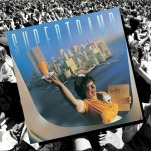A look at the life and career of the late Ray Harryhausen

Earlier today we learned of the death of Ray Harryhausen, the special-visual-effects specialist whose name practically became a synonym for the art of stop-motion animation. As a young man, Harryhausen was inspired by the work of Hollywood animation pioneer Willis O’Brien, best known for his work on King Kong (1933) and the 1925 silent film The Lost World. Harryhausen began making his first films when he was a teenager, building his own models and sets and teaching himself animation techniques through trial and error. At 18, he began work on his most ambitious early project, the unfinished prehistoric-times film Evolution Of The Earth:
He also started making connections. Harryhausen formed a mutual-appreciation society with the young Ray Bradbury and Forrest J. Ackerman, the budding movie-memorabilia collector and future publisher of the classic fan-nostalgia magazine Famous Monsters Of Filmland. Eventually he even worked up the courage to storm the studio castle and seek out Willis O’Brien at his MGM office. On O’Brien’s advice, Harryhausen enrolled at Los Angeles City College, taking classes to shore up his understanding of art and anatomy. In 1940, he began his professional apprenticeship by working for the producer George Pal on the Puppetoons series of short films. During World War II, Harryhausen enlisted in the Army and was soon assigned to work with Colonel Frank Capra on his series of propaganda films for the U. S. War Office.
After leaving the service, Harryhausen used the rolls of discarded film he’d managed to salvage to hone his skills, making a series of puppet films based on fairy tales and nursery rhymes. He also worked up test footage for his own, quirkier projects that he could never get funded—notably, an adaptation of H. G. Wells’ War Of The Worlds.
His first big break came in 1947, when O’Brien hired him to work on Mighty Joe Young, a sort of King Kong-lite adventure about a 12-foot gorilla. Although Harryhausen was officially credited as O’Brien’s assistant animator, it’s generally acknowledged that O’Brien had by then grown weary of the business and passed off most of the actual hands-on work to Harryhausen. Mighty Joe Young shows how far Harryhausen had already come in learning how to invest his models with individual personalities. Released in 1949, the film won the Academy Award for Best Special Effects.
The success of Mighty Joe Young and a resurgence in the popularity of giant monster movies resulted in the busiest period of Harryhausen’s career. His first solo assignment wasto create the title character for The Monster From Beneath The Sea—a film that soon became The Beast From 20,000 Fathoms, after Ray Bradbury responded to an offer to clean up its screenplay by pointing out that it was awfully similar to a story by that name he’d already published in The Saturday Evening Post. Having mastered the craft of making his models appear lifelike onscreen, Harryhausen now focused on developing a combination of split-screen, rear projection, and careful attention to lighting that would enable them to better blend in with live action. In a few years, the producer Charles H. Schneer would coin the snappy term “Dynamation” to describe Harryhausen’s technique.





















![Rob Reiner's son booked for murder amid homicide investigation [Updated]](https://img.pastemagazine.com/wp-content/avuploads/2025/12/15131025/MixCollage-15-Dec-2025-01-10-PM-9121.jpg)


















